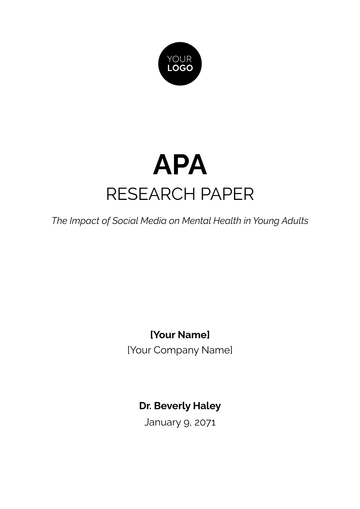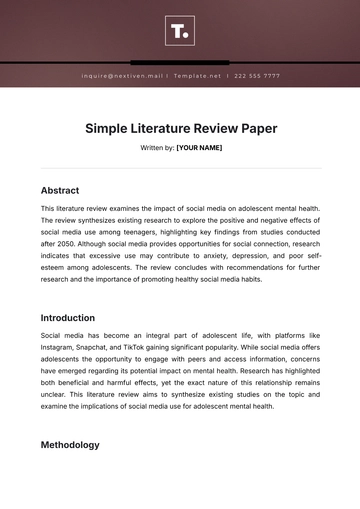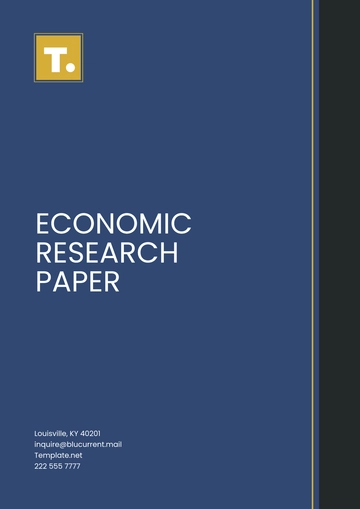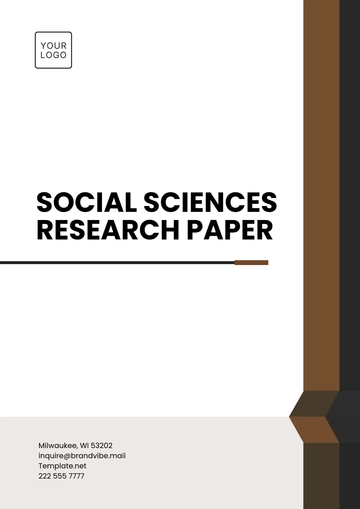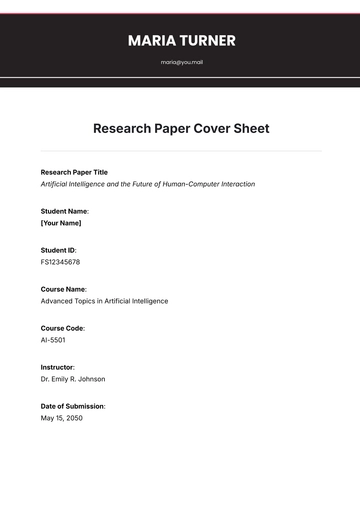Free Product Launch Research Paper
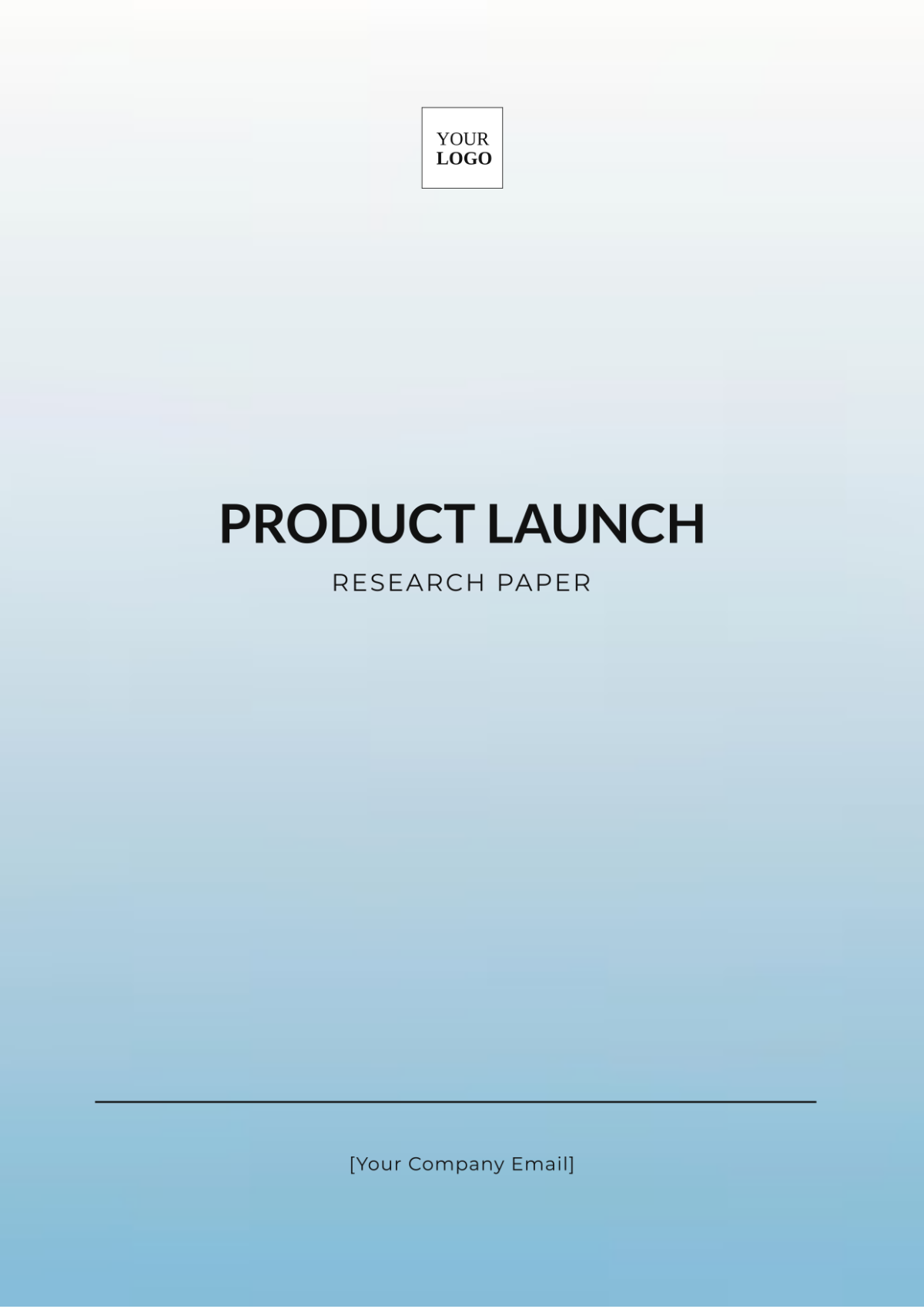
Introduction
Launching a new product requires a comprehensive understanding of market needs, customer preferences, and the competitive landscape. This research paper template is designed to document and present these findings effectively, aiding in successful product launches.
Executive Summary
The Executive Summary provides a high-level overview of the key findings and recommendations derived from the market research.
Summary of Market Needs: High demand for eco-friendly and sustainable products in the consumer goods sector.
Customer Preferences Insights: Consumers prefer products with minimal environmental impact and innovative features.
Competitive Analysis Outcomes: Major competitors are focusing on price competitiveness and broad distribution channels.
Strategic Recommendations: Focus on unique, eco-friendly features and a premium pricing strategy to differentiate from competitors.
Research Methods
Surveys and Questionnaires: Collected responses from 1,000 participants indicating a growing interest in sustainable products.
Focus Groups: Conducted 5 focus groups with 8-10 participants each, revealing a preference for products with transparent sourcing.
Interviews with Industry Experts: Interviews with 10 industry experts highlighted a trend toward eco-conscious consumer behavior.
Market Trends Analysis: Review of industry reports showing a 15% annual growth in eco-friendly product categories.
Findings
The findings from the market needs analysis are summarized in the table below:
Need | Description | Priority |
|---|---|---|
Eco-friendly Materials | Products made from recycled or sustainable materials | High |
Innovative Features | Unique product features that offer additional value | Medium |
Customer Preferences
Identifying customer preferences helps tailor the product to meet their expectations.
Demographics
Age Range: 25-45 years old.
Gender Distribution: 60% female, 40% male.
Income Levels: $50,000 - $100,000 annual income.
Geographic Location: Urban areas with a focus on the West Coast and Northeast regions.
Behavioral Analysis
Purchase Behavior: High interest in online shopping and direct-to-consumer models.
Brand Loyalty: Strong preference for brands with transparent sustainability practices.
Product Usage Patterns: Frequent purchases of eco-friendly household items.
Feedback and Reviews: Positive feedback on eco-friendly product lines from competitors.
Findings
The key insights from customer preferences analysis are summarized in the table below:
Customer Segment | Preference | Comments |
|---|---|---|
Segment A | Eco-friendly packaging | Strong demand for recyclable packaging |
Segment B | Innovative product design | The desire for unique, functional features |
Competitive Analysis
A thorough competitive analysis provides insights into the strengths and weaknesses of competitors, helping inform strategic decisions.
Key Competitors
EcoWare Inc.
GreenProducts Co.
Sustainable Solutions Ltd.
SWOT Analysis
Competitor | Strengths | Weaknesses | Opportunities | Threats |
|---|---|---|---|---|
EcoWare Inc. | Established brand, strong distribution | Higher price points | Expanding eco-conscious market | Increasing competition in the segment |
GreenProducts Co. | Innovative product features, strong R&D | Limited market presence | Growing demand for sustainable products | Vulnerability to price competition |
Sustainable Solutions Ltd. | Broad product range, strong online presence | Less focus on product innovation | Opportunity to leverage sustainability trends | Potential supply chain disruptions |
Conclusions
Market Needs Alignment: The product’s eco-friendly features align with the growing consumer demand for sustainable options.
Customer Preferences Impact: Preferences for innovative designs and eco-friendly packaging should be integrated into product development.
Competitive Landscape: Differentiation through unique features and premium positioning can effectively compete with established players.
Recommendations
Product Feature Prioritization: Emphasize sustainable materials and innovative design elements.
Marketing Strategies: Develop a campaign highlighting the product’s eco-friendly aspects and unique features.
Pricing Strategies: Implement a premium pricing strategy to reflect the product’s unique value proposition.
Distribution Channels: Focus on online sales channels and eco-friendly retail partners.
Customer Engagement Tactics: Leverage social media and influencer partnerships to build brand awareness and customer loyalty.
References
Smith, J. (2055). Trends in Eco-Friendly Consumer Goods. Green Publications.
Doe, A. (2056). Sustainability and Consumer Behavior. Market Insights Inc.
Johnson, L. (2057). Competitive Analysis in the Eco-Products Sector. Industry Reports Ltd.
- 100% Customizable, free editor
- Access 1 Million+ Templates, photo’s & graphics
- Download or share as a template
- Click and replace photos, graphics, text, backgrounds
- Resize, crop, AI write & more
- Access advanced editor
Plan a successful product launch with Template.net's Product Launch Research Paper Template. This customizable and editable template in our Ai Editor Tool provides a comprehensive framework for analyzing market trends, target audiences, and launch strategies. Perfect for creating a research paper that drives impactful product introductions.



